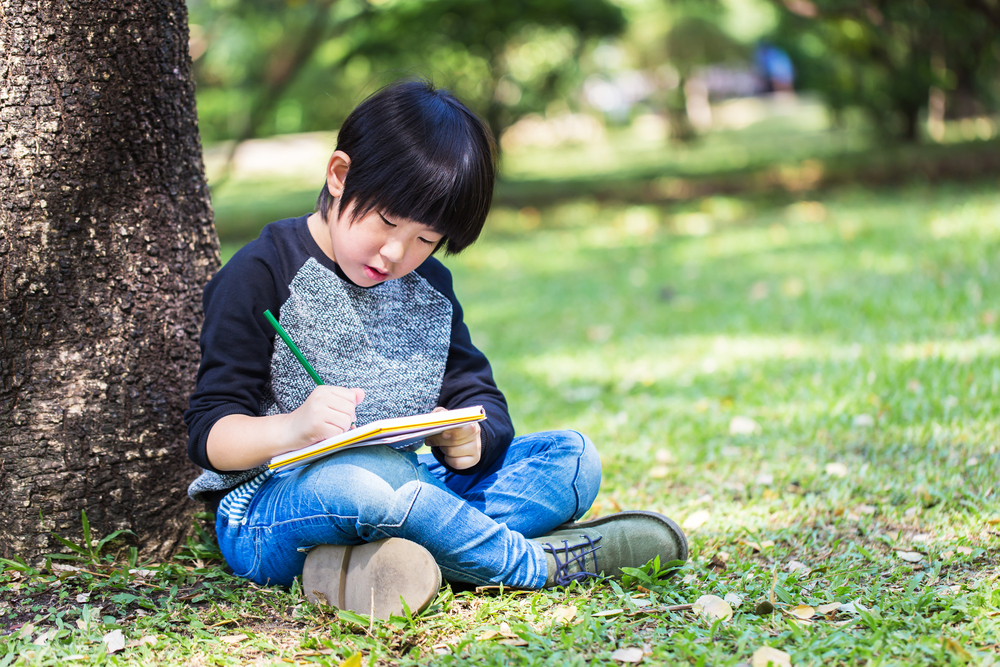Nature Journals in the Classroom
- April 22, 2024
- By Christy Peterson
Writers have a reputation for being consummate journal-keepers, but somehow that trait missed me. I do, however, jot down observations and sketches on hikes or other forays into nature. Usually these notes are scribbled on the back of a brochure or some other scrap paper, but regardless of the medium, the benefit is the same. Nature journaling sharpens observations and strengthens neural connections, helping me recall what I’ve seen and remember topics I save for later research.
Being outside has many benefits for students, the most notable being the combination of stress-reduction and improved concentration. The opportunity to observe the natural world, instead of just reading about it in a textbook, is also hugely beneficial.
If you’ve never tried having your students keep journals before, here’s an easy way to get started. Don’t be dismayed if things are a little bumpy at first, even with a class that is usually cooperative. We don’t celebrate the art of sitting quietly and observing in our culture much, so this will take some practice.
Activity—Getting Started Exercise
You’ll need:
- Some kind of journal for each student (an inexpensive composition book works nicely for this)
- Writing implement for each student
- A place outside where kids can safely spread out and write.*
*A school garden or nice landscaped area is perfect for this activity, but a wide grassy area will work just fine. Even if your only outdoor area is a courtyard or basketball court, don’t despair. The ants on the sidewalk and the dandelions stubbornly growing from a crack are nature too.
Instructions:
- Go over any necessary safety instructions before heading outside.
- Once outside, have students choose a place to sit. They need to be far enough away from friends that quiet observations can occur.
- Have students make their observations in the following order: Free Write, Sensory Questions, Focused Observations.
- Free Write—for two minutes (more or fewer depending upon your group), have students write down everything they notice—good, annoying, or mindless. This is an information dump—the planes flying overhead, the annoying pokey rock, the lawn mowers, the beautiful flower—everything gets recorded, free-flow.
- Sensory Questions—now ask students to focus on individual senses. What do they see? What do they hear? What do they smell? What do they touch (if appropriate)?
- Focused Observations—finally, have students to zero in on one aspect of their surroundings. It can be biotic (living) or abiotic (nonliving). Ask them to describe their chosen subject in as much detail as possible, using all appropriate senses. They can make sketches as well. It’s okay if they choose the sidewalk or the swing-set. These objects are part of the habitat too.
As students become comfortable with the regular practice of paying attention, you can start adding specific tasks to this regular exercise. Teaching a unit on plants? Have students sketch different kinds of leaves or sketch and name the parts of a plant. Studying how energy moves through the food chain? Have students explain specifically how energy moves through their habitat. Studying what makes “good” habitat? Discuss the quality of the habitat the students observe regularly. How might they improve it?
Using Journals to Extend Learning
We’ve already mentioned the benefits of being outdoors and writing down observations. However, the other bonus of having kids keep nature journals is the ability to take the students’ regular observations and use them in other disciplines. Here are some ideas for using nature journals across the curriculum:
- Encourage students to record their questions about what they see. Discuss later, or have them look for the answers and report back.
- Ask students to record some kind of quantitative data over a period of time. They can record the height of a plant over several weeks, the temperature during their observations, the number of animal species they see each time, etc. Have them create a table, chart, or graph to show the data.
- Have them take their rough sketches and create some kind of art project to share what they’ve seen over a period of time.
- Have students pick one plant or animal they’ve observe and write a brief report about it.
- Have students write a poem that draws on the things they’ve written in their journals.
- Have students write a fictional story set in the habitat they’ve been writing about.
Resources
- “Opening the World through Nature Journaling” from California Native Plant Society
- “Introduction to the Nature Journal” from Smithsonian Education
- “The Nature Journal as a Tool for Learning” from Johns Hopkins School of Education

Kids Discover Talks with Television Lighting Designer Christopher Landy About the Rockefeller Center Christmas Tree Lighting
- December 9, 2025

It’s the Most Wonderful Time of the Year… For Community Service Projects!
- December 8, 2025

The Rockefeller Center Christmas Tree Lights the 2025 Holiday Season in New York City
- December 3, 2025
